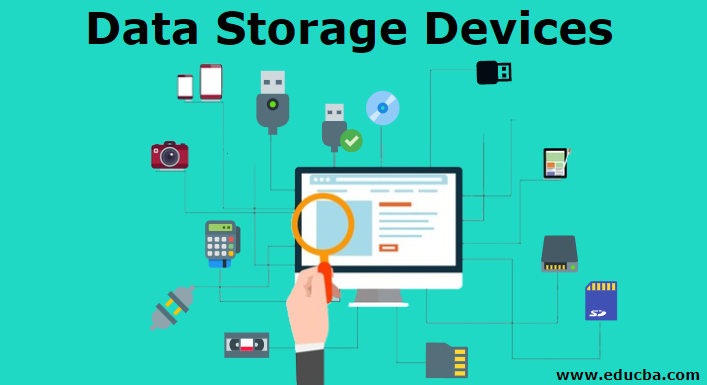
In today’s interconnected world, where vast amounts of data are generated and accessed at an unprecedented pace, choosing the right storage path has become a crucial decision for individuals and businesses alike. With an ever-expanding array of storage devices and the limitless capabilities of the internet, the options available for data storage have grown exponentially. However, this abundance of choices also presents a challenge: how do we navigate through this sea of options to find the most suitable solution? In this blog post, we will delve into the realm of storage devices and explore the intricacies of leveraging the internet for data storage. By understanding the strengths and limitations of different storage technologies, we can make informed decisions and ensure that our valuable data is stored securely, efficiently, and conveniently. So, let’s embark on this journey of exploration and discover the ideal path for our data storage needs.
Traditional Storage Devices
A. Hard Disk Drives (HDDs)
HDDs use magnetism to store and retrieve data through spinning platters and read/write heads. They offer high storage capacity and cost-effectiveness, but they have slower performance, are more fragile, and consume more power compared to SSDs.
B. Solid-State Drives (SSDs)
SSDs employ flash memory to store and retrieve data electronically. They provide faster performance, enhanced durability, and energy efficiency. However, they tend to be more expensive, have limited write cycles, and offer smaller capacities compared to HDDs.
C. Optical Discs
Optical discs use laser technology for data reading and writing. They are portable, have decent longevity, and are compatible with various devices. Nevertheless, their storage capacity is limited, they have slower access speeds, and are prone to physical damage and data loss.
Cloud Storage
Cloud storage refers to storing data on remote servers accessed over the internet. It offers accessibility, convenience, data backup, scalability, and collaboration features through web-based interfaces or APIs.
1. Benefits of cloud storage
Cloud storage provides convenient access to files from anywhere, automatic data backup, scalability, and seamless collaboration. Users can share and work on files simultaneously, fostering productivity and remote work.
2. Popular cloud storage providers and their features
Google Drive offers free storage and integration with Google services, Dropbox focuses on user-friendly file syncing and collaboration, Microsoft OneDrive integrates with Office suite, Amazon S3 is designed for developers, and iCloud tightly integrates with Apple devices and services.
3. Considerations for using cloud storage
Security is crucial, so check for encryption and access controls. Understand privacy policies and compliance with regulations. Evaluate the cost structure, storage plans, and additional fees to ensure cost-effectiveness.
Network-Attached Storage (NAS)
Network-Attached Storage (NAS) is a dedicated file storage device connected to a network, providing centralized data storage and access to multiple users and devices. NAS devices are equipped with their own operating systems and offer file-level data storage, management, and sharing capabilities.
Advantages of NAS
Centralized storage:
NAS enables centralized storage, allowing multiple users to access and share files from a single location, improving collaboration and data management.
Data backup and redundancy:
NAS devices often offer built-in data backup features, including RAID configurations, ensuring data integrity and protection against hardware failures.
Data streaming and media server capabilities:
Many NAS devices have the ability to stream media content, acting as a media server for home entertainment systems.
Scalability:
NAS devices can be expanded by adding additional hard drives or by connecting multiple NAS devices, providing flexible and scalable storage options.
Use cases for NAS
Home storage and media server:
NAS devices are commonly used at home to store and stream media files, allowing easy access to music, videos, and photos across multiple devices.
Small business and workgroup storage:
NAS provides a cost-effective solution for small businesses and workgroups to store and share files securely, promoting collaboration and data accessibility.
Data backup and recovery:
NAS devices can serve as backup targets for local computers, providing automated backup solutions and quick data recovery in case of system failures or data loss.
Key features to consider when choosing a NAS
Storage capacity and expandability:
Evaluate the maximum storage capacity and the ability to expand the NAS with additional drives.
RAID support:
Look for NAS devices supporting various RAID configurations to ensure data redundancy and protection.
Data management and access control:
Consider the available management features, including user access controls, file permissions, and remote access capabilities.
Backup and synchronization options:
Check for backup features like scheduled backups, cloud backup integration, and synchronization with other devices.
Network connectivity and speed:
Assess the available network interfaces (e.g., Ethernet, Wi-Fi) and the device’s data transfer speeds to meet your network requirements.
Read More : Is Technology a Good Career Path?
Conclusion
In conclusion, we have explored various storage options for data storage in this blog post. Traditional storage devices like Hard Disk Drives (HDDs), Solid-State Drives (SSDs), and Optical Discs each have their own advantages and disadvantages. Cloud storage provides accessibility, scalability, and collaboration benefits, while Network-Attached Storage (NAS) offers centralized storage and backup capabilities. When selecting a storage option, it is important to consider specific needs and requirements, such as storage capacity, performance, security, and cost. Looking ahead, the future of data storage is promising, with emerging technologies and advancements in artificial intelligence (AI) shaping more efficient and innovative storage solutions. It is crucial to stay informed about new developments in order to choose the most suitable storage option for data storage needs.

